Sea Surface Temperature: 47 F
Sea State: 2 foot seas
Meet the Birds
Many birds have flown by us as we have crisscrossed the seas. This is a real treat for a bird nerd such as myself. I thought I would take some time to introduce some of the birds we have seen.
Short-tailed Shearwater
We often see short-tailed shearwaters gliding low over the waves by themselves or in small groups, and yesteday a flock of several hundred short-tailed shearwaters flew by. These birds are migration champions - they fly all the way to southern Australia to breed. At their breeding grounds they lay one egg per year. Each day the parents fly out to sea to forage and return at night to regurgitate their food for the chick to eat. As the chick grows, the parents feed it less and less frequently before abandoning it altogether. When the chick is about 80 days old it fledges and flies out to sea.
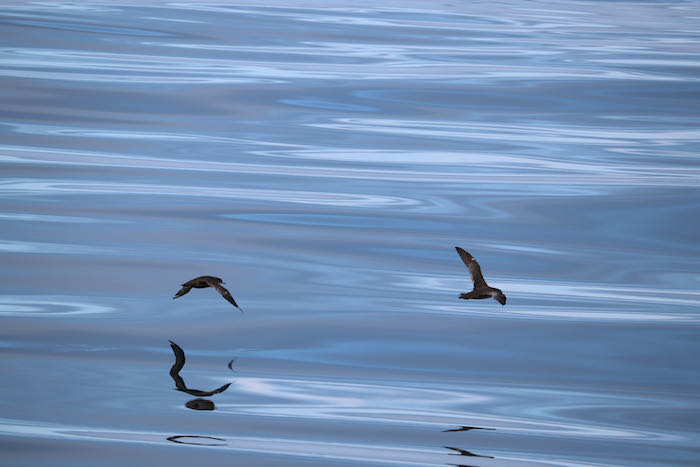
Northern Fulmar
Northern fulmars look like gulls but are more closely related to shearwaters and petrels. In Alaska they only nest on remote islands in the Bering Sea such as the Pribilofs. They come ashore only to breed and spend the rest of their lives on the open ocean hunting for fish, squid, zooplankton, and even jellyfish. They can live for 60 years! They mate for life and return to the exact same nest site every year. They defend their nest sites by spraying liquid from their stomaches at intruders.

Common Murre
Common murres are one of my favorite birds. We have seen them flying past alone and in small groups, flapping their wings frantically. They lay their eggs on tiny ledges on cliffs. They can dive to incredible depths, as deep as 590 feet!
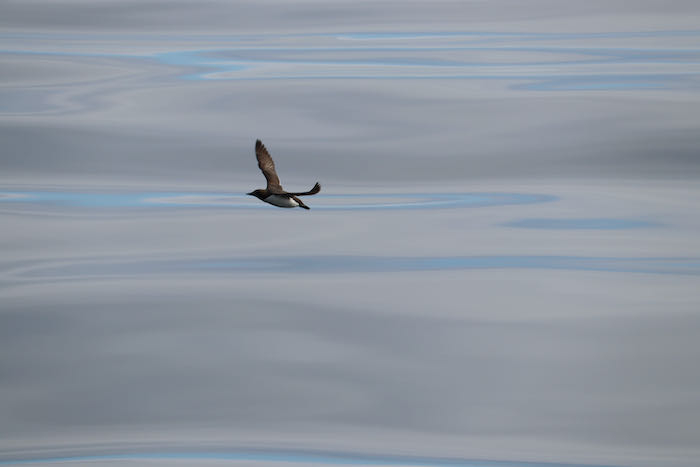
Who's Who on the Norseman II
James
James first came to Alaska 20 years ago to work on a charter fishing boat. Since then he has had many interesting careers, including owning a commercial fishing boat in Hawaii with his best friend. He says that you miss the ocean once you leave it, and so after several years on land, he is back in Alaska, working for the captain of the charter boat he crewed so many years ago.
James’s job as deckhand seems to mean that he does a little of everything. His shift is from 8:00 am to 8:00 pm (on the boat you would say 0800-2000 hours). During this time, he operates a winch, helps with the CTDA research tool that is submerged in the water to measure conductivity (salinity), temperature, and depth., keeps the boat in good shape by cleaning and vacuuming, keeps everyone’s spirits in good shape by helping with meals, and does deck checks to make sure everything is fastened and stowed.
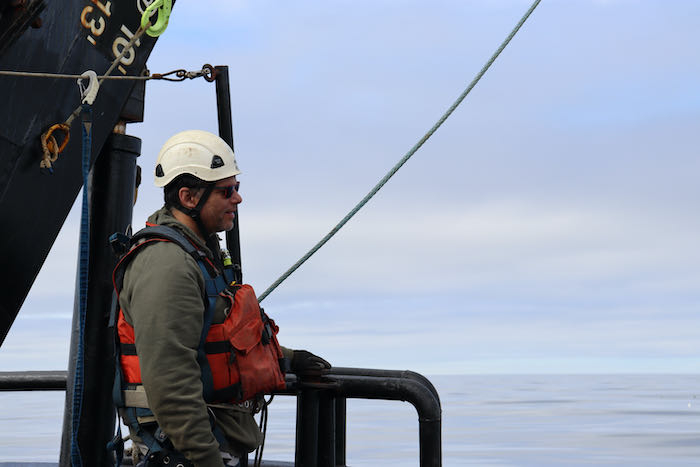
Jim
When not he is not busy winning onboard cribbage tournaments, Jim is hard at work as the bosun, the officer in charge of the equipment and the crew. His is responsible for keeping the boat systems working, consulting with the head scientist to help the research get done, making sure that we don’t pollute the ocean, and deploying equipment safely. Jim is a highly qualified individual. After graduating high school, he worked on fishing boats for 25 years, fishing for king crab, snow crab, halibut, and black cod. As he worked, he picked up the skills he uses today. He has also worked on tug boats, ferries, and other research boats. One way that he helped himself get hired on different boats was by getting his ordinary seaman license, followed by able bodied seaman, engineering 100-ton mate, and 100-ton master. Each of these licenses made him more hirable. He has enjoyed doing his trainings in different places, such as doing his firefighting training in Florida.
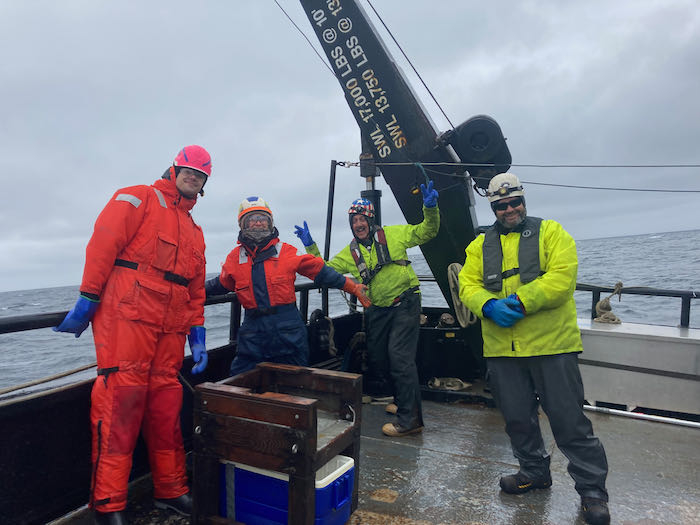
Nate
Round-bodied and equipped with a suction cup on their stomach, Lumpfish are important for aquaculture because they will eat parasites off of farm-raised salmon. No one onboard this vessel knows more about them than Nate, and no-one onboard has done more to share this delightful fish with the world.
Nate’s dad was a commercial fisherman who told many stories and took his son on fishing trips, kindling Nate’s interest in what’s beneath the water’s surface. In his senior year of high school, Nate decided to become a marine biologist. This path took him to the University of New Hampshire to study marine science. After graduating from college, he signed on as a lab technician at a lab studying lumpfish aquaculture. As he tended the fish tanks, he grew so interested in the project that he decided to study lumpfish even more by doing a master’s degree. It was then that he started sharing videos of lumpfish and other creatures in his lab on TikTok. The videos went viral!
When not sharing content with his 1.7 million TikTok followers, Nate works as a research assistant at Woods Hole. There, he designs experiments, analyzes samples, and cares for lab cultures of different species of plankton. These skills help him out on the Norseman II, where he helps with sediment grabs and makes oxygen measurements for the cyst incubation experiments.
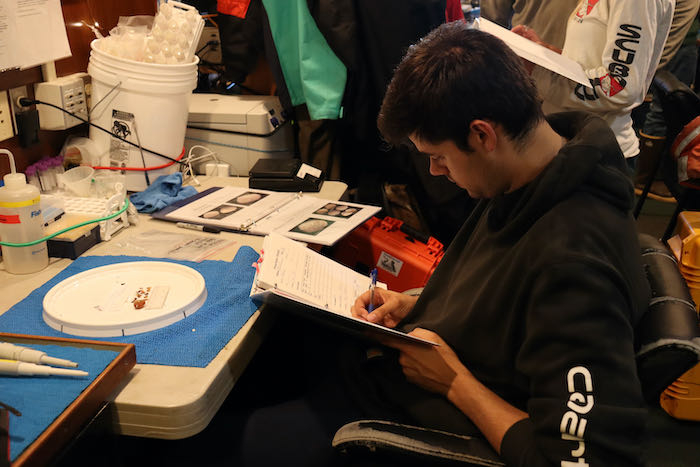

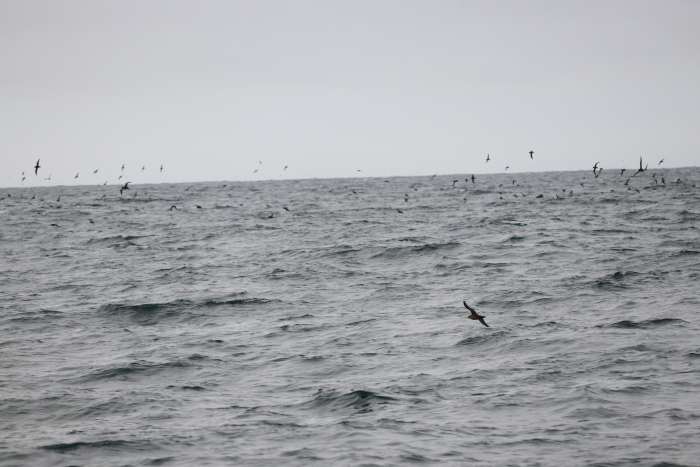

Comments